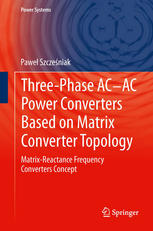

Most ebook files are in PDF format, so you can easily read them using various software such as Foxit Reader or directly on the Google Chrome browser.
Some ebook files are released by publishers in other formats such as .awz, .mobi, .epub, .fb2, etc. You may need to install specific software to read these formats on mobile/PC, such as Calibre.
Please read the tutorial at this link: https://ebookbell.com/faq
We offer FREE conversion to the popular formats you request; however, this may take some time. Therefore, right after payment, please email us, and we will try to provide the service as quickly as possible.
For some exceptional file formats or broken links (if any), please refrain from opening any disputes. Instead, email us first, and we will try to assist within a maximum of 6 hours.
EbookBell Team

0.0
0 reviewsAC voltage frequency changes is one of the most important functions of solid state power converters. The most desirable features in frequency converters are the ability to generate load voltages with arbitrary amplitude and frequency, sinusoidal currents and voltages waveforms; the possibility of providing unity power factor for any load; and, finally, a simple and compact power circuit. Over the past decades, a number of different frequency converter topologies have appeared in the literature, but only the converters with either a voltage or current DC link are commonly used in industrial applications. Improvements in power semiconductor switches over recent years have resulted in the development of many structures of AC-AC converters without DC electric energy storage. Such converters are an alternative solution for frequently recommended systems with DC energy storage and are characterized by a lower price, smaller size and longer lifetime. Most of the these topologies are based on the structure of the matrix converter.
Three-Phase AC-AC Power Converters Based On Matrix Converter Topology: Matrix-reactance frequency converters concept presents a review of power frequency converters, with special attention paid to converters without DC energy storage. Particular attention is paid to nine new converters named matrix-reactance frequency converters which have been developed by the author and the team of researchers from Institute of Electrical Engineering at the University of Zielona Góra. The topologies of the presented matrix-reactance frequency converters are based on a three-phase unipolar buck-boost matrix-reactance chopper with source or load switches arranged as in a matrix converter. This kind of approach makes it possible to obtain an output voltage greater than the input one (similar to that in a matrix-reactance chopper) and a frequency conversion (similar to that in a matrix converter).
Written for researchers and Ph.D. students working in the field of power electronics converters and drive systems, Three-Phase AC-AC Power Converters Based On Matrix Converter Topology: Matrix-reactance frequency converters concept will also be valuable topower electronics converter designers and users; R&D centers; and readers needing industry solutions in variable speed drive systems, such as automation and aviation.